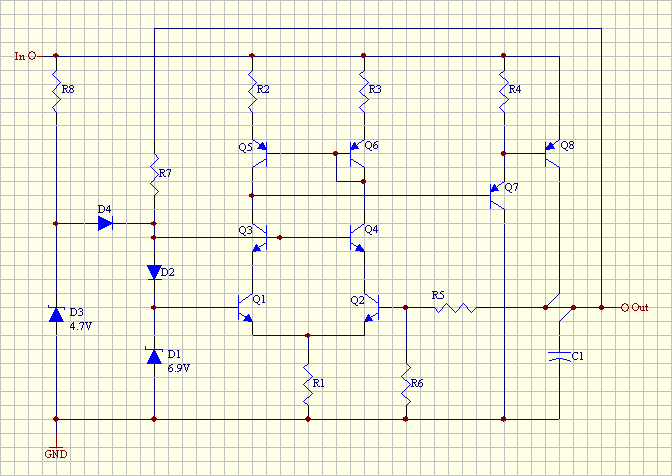Samuel Groner
Well-known member
Hi
Consider the following conceptual schematic for a discrete low-dropout voltage regulator:

Let me ask a few question before I attempt to build a realisation:
* Is the startup network R8/D3/D4 sufficient to guarantee startup?
* Q8 will need a reverse-protection diode; is there a need for a similar protection scheme (anti-parallel diodes as we know it from opamps) for Q1/Q2?
* Simulation indicates that the output impedance considerably peaks at somewhere above 100 kHz if C1 is chosen at 1000 uF. Increasing the capacity by one to two orders of magnitude solves this but it ain't practical. Is there another simple technique to address this issue?
Thanks for your help!
Samuel
Consider the following conceptual schematic for a discrete low-dropout voltage regulator:

Let me ask a few question before I attempt to build a realisation:
* Is the startup network R8/D3/D4 sufficient to guarantee startup?
* Q8 will need a reverse-protection diode; is there a need for a similar protection scheme (anti-parallel diodes as we know it from opamps) for Q1/Q2?
* Simulation indicates that the output impedance considerably peaks at somewhere above 100 kHz if C1 is chosen at 1000 uF. Increasing the capacity by one to two orders of magnitude solves this but it ain't practical. Is there another simple technique to address this issue?
Thanks for your help!
Samuel

































